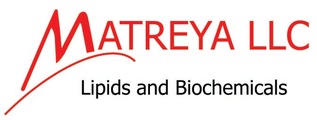服务热线
021-60498804
产品中心
/ Products Classification 点击展开+
| Cat. Number | 1504 |
| Chemical Name | 1504 62010-37-1 双唾液酸神经节苷脂GD3(NH4+salt) Disialoganglioside GD3 (NH4+salt) |
| CAS Number | 62010-37-1 |
| Mol. Formula | C75H135N3O29•2NH3 |
| Mol. Weight | 1543+2NH3 |
| Qty 1 |
5mg |
| Appearance | solid |
| Application Notes | 98+%,TLC; identity confirmed by MS |
| Synonym | GD3 |
| Solubility | chloroform/methanol, 2:1; forms micellar solution in water |
| Storage condition | -20°C |
| References | Application Notes: Gangliosides1 are acidic glycosphingolipids that form lipid rafts in the outer leaflet of the cell plasma membrane, especially in neuronal cells in the central nervous system.2 They participate in cellular proliferation, differentiation, adhesion, signal transduction, cell-to-cell interactions, tumorigenesis, and metastasis. The accumulation of gangliosides has been linked to several diseases including Tay-Sachs and Sandhoff disease. GD3 is predominantly expressed during neuronal development and its expression becomes very limited in adult tissues. GD3 expression is unusually high in basal cell carcinomas and malignant melanomas and is thought to be a human melanoma-specific antigen. Although GD3 is not immunogenic it has been investigated as a tool for immunotargeting human melanoma cells.3 Over expression of GD3 has led to apoptosis by recruiting mitochondria to apoptotic pathways and suppressing NF-κB activation and subsequent κB-dependent gene induction.4 Increased levels of GD3 have also been found to be associated with proliferative diseases, such as atherosclerosis.
References: |





